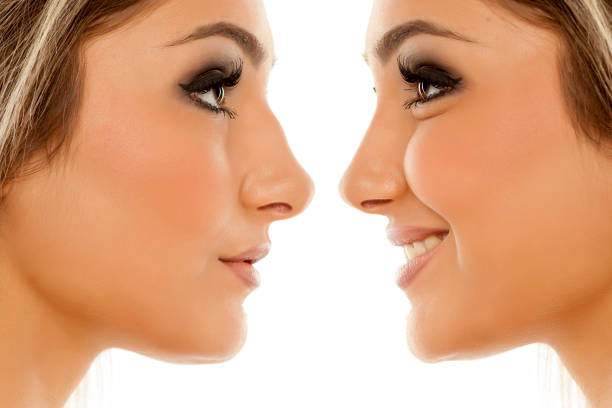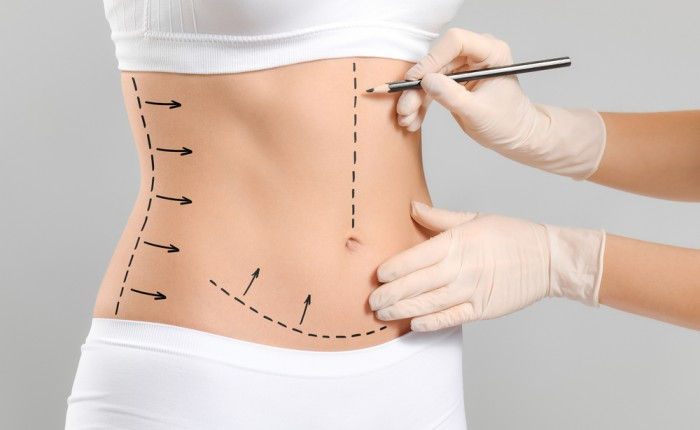Comparing Rhinoplasty Techniques: Which One Is Right for You?
- sadaf khan sudozai
- Feb 19
- 4 min read
Rhinoplasty, commonly known as a nose job, is a popular cosmetic and functional procedure that reshapes the nose to improve appearance or correct breathing issues. If you are considering Rhinoplasty in Islamabad, understanding the different surgical techniques is crucial. Various methods are available depending on your goals, nasal structure, and medical needs. This blog will compare the most common rhinoplasty techniques to help you determine which one is right for you.

Why Choosing the Right Rhinoplasty Technique Matters
Selecting the appropriate rhinoplasty technique is essential for achieving your desired results while minimizing risks and recovery time. Factors such as the complexity of the correction, cosmetic goals, and surgeon’s recommendation will influence the choice of technique. Each approach has its advantages and limitations, making it vital to consult with an experienced surgeon for personalized advice.
Main Rhinoplasty Techniques
1. Open Rhinoplasty
Open rhinoplasty is the most common technique used for significant nasal corrections. In this approach, the surgeon makes a small incision on the columella (the tissue between the nostrils) and lifts the nasal skin to access the underlying structures.
Pros:
Provides full visibility of nasal anatomy, allowing for precise corrections.
Ideal for complex cases requiring extensive reshaping.
Better suited for revision rhinoplasty or significant structural adjustments.
Cons:
Slightly longer recovery time compared to closed rhinoplasty.
Visible (though minimal) scarring on the columella.
May cause temporary swelling lasting several months.
Best for: Patients seeking significant nasal reshaping, correcting deformities, or undergoing revision surgery.
2. Closed Rhinoplasty
In closed rhinoplasty, all incisions are made inside the nostrils, leaving no external scars. This technique is less invasive and often preferred for patients needing minor adjustments.
Pros:
No visible external scars.
Shorter surgery duration and faster recovery.
Reduced postoperative swelling and bruising.
Cons:
Limited access to nasal structures, making it unsuitable for complex procedures.
Less visibility for the surgeon, which may limit precision in certain corrections.
Best for: Patients requiring minor cosmetic changes like tip refinement or dorsal hump removal.
3. Revision Rhinoplasty
Revision rhinoplasty is performed to correct issues from a previous rhinoplasty procedure. These can include aesthetic concerns, functional problems, or both.
Pros:
Addresses both functional and cosmetic issues that previous surgery could not resolve.
Tailored to improve unsatisfactory results from the initial procedure.
Cons:
More complex than primary rhinoplasty.
Requires a highly skilled surgeon due to scar tissue and altered anatomy.
Recovery time may be longer.
Best for: Patients dissatisfied with previous rhinoplasty results or experiencing new nasal issues post-surgery.
4. Filler (Non-Surgical) Rhinoplasty
Non-surgical rhinoplasty involves the use of dermal fillers to temporarily alter the nose’s appearance without invasive surgery. It’s ideal for patients seeking subtle changes without downtime.
Pros:
Quick procedure with minimal recovery.
No surgical incisions or general anesthesia.
Immediate results.
Cons:
Temporary results, typically lasting 6-12 months.
Cannot address functional issues or significant reshaping.
Not suitable for reducing the size of the nose.
Best for: Patients seeking minor adjustments or those wanting to “test” changes before surgery.
5. Ultrasonic Rhinoplasty
This advanced technique uses ultrasonic devices to precisely sculpt nasal bones without damaging surrounding tissues.
Pros:
Greater precision in reshaping nasal bones.
Less bruising and swelling compared to traditional methods.
Faster recovery time.
Cons:
Requires specialized equipment and training.
May not be widely available in all clinics.
Best for: Patients seeking precise bone reshaping with minimal trauma and quicker recovery.
Factors to Consider When Choosing a Technique
1. Cosmetic Goals
If your goal is purely cosmetic, your surgeon will recommend a technique that provides optimal aesthetic results while minimizing downtime. Closed rhinoplasty may suffice for minor adjustments, while open rhinoplasty is better for more extensive reshaping.
2. Functional Needs
For patients with breathing difficulties or structural abnormalities, functional rhinoplasty (often open rhinoplasty) is typically recommended. Your surgeon may also address cosmetic concerns during the same procedure.
3. Extent of Correction Required
Minor corrections like nasal tip refinement can be performed with less invasive methods. In contrast, significant deformities or post-traumatic corrections may require open rhinoplasty.
4. Recovery Time
Closed rhinoplasty and filler rhinoplasty offer faster recovery times. Open rhinoplasty, although more comprehensive, requires a longer healing period.
5. Surgeon’s Recommendation
An experienced surgeon will assess your nasal anatomy, medical history, and desired outcome to suggest the best approach tailored to your needs.
Comparing Rhinoplasty Techniques: Quick Overview
Technique | Best For | Pros | Cons |
Open Rhinoplasty | Significant reshaping, complex cases | Precise corrections, full visibility | Longer recovery, slight scarring |
Closed Rhinoplasty | Minor adjustments, tip refinement | No scars, faster recovery | Limited access, less suitable for complex cases |
Revision Rhinoplasty | Correcting previous surgery issues | Tailored solutions, addresses functional & aesthetic concerns | More complex, longer healing time |
Filler Rhinoplasty | Subtle temporary changes | Quick, non-invasive, immediate results | Temporary, not suitable for major changes |
Ultrasonic Rhinoplasty | Precise bone reshaping | Minimal bruising, faster recovery | Requires specialized equipment |
Why Consultation is Crucial
Choosing the right rhinoplasty technique is not a one-size-fits-all decision. An in-depth consultation with a qualified surgeon is essential to discuss your goals, evaluate your nasal structure, and review your medical history. This ensures you receive a personalized treatment plan with realistic expectations.
Preparing for Your Rhinoplasty Consultation
When preparing for your consultation, consider the following:
Bring photos to illustrate desired results.
Be honest about your medical history and any previous nasal surgeries.
Discuss both cosmetic and functional goals.
Ask about potential risks, benefits, and recovery timelines.
Clarify all costs, especially regarding whether any part of the surgery may be covered by insurance.
Why Choose Dynamic Clinic for Rhinoplasty in Islamabad?
Choosing a reputable clinic is essential for achieving safe and satisfactory results. Dynamic Clinic in Islamabad is known for its experienced surgeons, advanced technology, and patient-focused care.
What Sets Dynamic Clinic Apart?
Comprehensive consultation services to determine the best rhinoplasty technique for you.
Skilled surgeons with extensive experience in various rhinoplasty methods.
Use of modern surgical technologies to enhance precision and safety.
Transparent communication and personalized treatment plans.
Postoperative care to ensure optimal recovery and results.
Final Thoughts
Rhinoplasty is a life-changing decision that requires careful consideration of the right technique for your specific goals. Factors like the extent of correction, functional needs, and desired aesthetic outcomes play a significant role in determining the most suitable approach. Techniques like open and closed rhinoplasty offer distinct advantages depending on the complexity of the procedure, while non-surgical options cater to those seeking temporary changes.





Comments